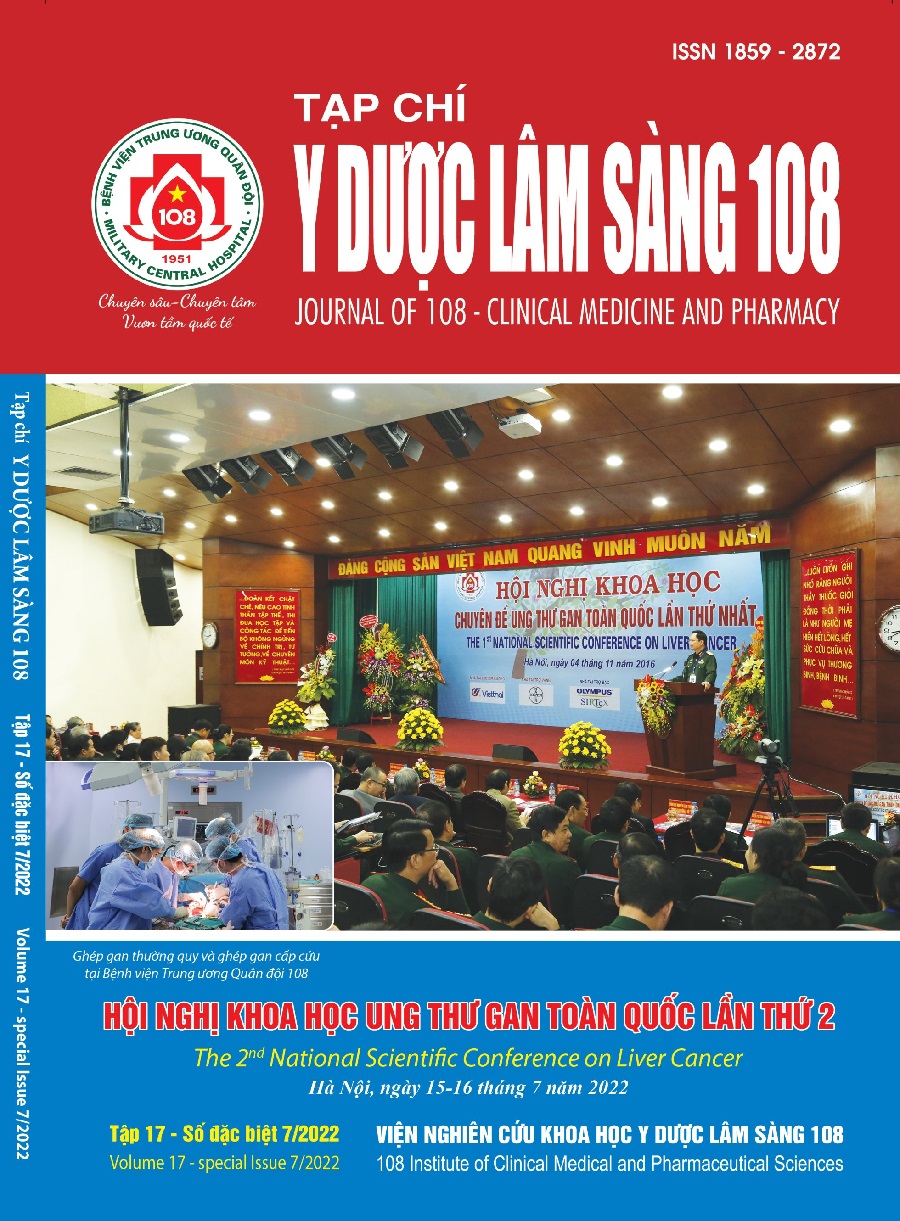Cập nhật các biến thể mô bệnh học của ung thư biểu mô tế bào gan
Main Article Content
Keywords
Tóm tắt
Ung thư biểu mô tế bào gan là một trong 6 loại ung thư thường gặp nhất trên thế giới và khu vực Đông Nam Á. Ung thư biểu mô tế bào gan thường có liên quan đến các bệnh gan mạn tính như viêm gan virus B và virus C, viêm gan mỡ hoá do rượu và không do rượu (vẫn đang tiếp tục tăng do tăng tỷ lệ béo phì và đái tháo đường). Mặc dù đã có nhiều tiến bộ nhưng tỷ lệ tái phát, di căn xa và kháng hoá trị vẫn là rào cản trong điều trị ung thư biểu mô tế bào gan. Những tiến bộ mới trong nghiên cứu gen và liệu pháp nhắm trúng đích phân tử là một hy vọng cho kiểm soát bệnh tốt hơn. Bảng phân loại mô bệnh học ung thư biểu mô tế bào gan của Tổ chức Y tế Thế giới được áp dụng rộng rãi và thực hành trên toàn cầu. Việc bổ sung, sửa đổi trong phân loại lần thứ 5 đã thiết lập các biến thể ung thư biểu mô tế bào gan và có liên quan đến đặc điểm phân tử. Việc hiểu biết thêm về các biến thể như ung thư biểu mô tế bào gan thể bè lớn, ung thư biểu mô tế bào gan mỡ hoá, ung thư biểu mô tế bào gan giàu lympho bào, ung thư biểu mô tế bào gan thể xơ cứng, ung thư biểu mô tế bào gan thể xơ lá... cùng với đặc điểm sinh học phân tử của ung thư gan nguyên phát có ý nghĩa tiên lượng và góp phần hướng dẫn quản lý bệnh tốt hơn.
Article Details
Các tài liệu tham khảo
2. Nagtegaal ID, Odze RD, Klimstra D, Paradis V, Rugge M, Schirmacher P, Washington KM, Carneiro F, Cree IA; WHO Classification of Tumours Editorial Board (2019) The 2019 WHO classification of tumours of the digestive system. Histopathology 76(2):182-188. doi: 10.1111/his.13975.
3. Bosman TF, Carneiro F, Hruban RH (2010) WHO classification of tumours of the digestive system. 4th ed. Geneva: International agency for Research on Cancer.
4. Roncalli M, Park YN, Di Tommaso L (2010) Histopathological classification of hepatocellular carcinoma. Dig Liver Dis 42(3): 228-234.
5 Honeyman JN, Simon EP, Robine N et al (2014) Detection of a recurrent DNAJB1-PRKACA chimeric transcript in fibrolamellar hepatocellular carcinoma. Science 343: 1010-1014.
6. Kastenhuber ER, Lalazar G, Houlihan SL et al (2017) DNAJB1-PRKACA fusion kinase interacts with beta-catenin and the liver regenerative response to drive fibrolamellar hepatocellular carcinoma. Proc Natl Acad Sci USA 114: 3076-3084.
7. Salomao M, Yu WM, Brown Jr RS et al (2010) Steato-hepatitic hepatocellular carcinoma (SH-HCC): A distinctive histological variant of HCC in hepatitis C virus-related cirrhosis with associated NAFLD/NASH. Am J Surg Pathol 34: 1630-1636.
8. Lee JS, Yoo JE, Kim H et al (2012) Tumor stroma with senescence-associated secretory phenotype in steatohepatitic hepatocellular carcinoma. PLoS One, 12 e0171922.
9. Seok JY, Na DC, Woo HG et al (2012) A fibrous stromal component in hepatocellular carcinoma reveals a cholangiocarcinoma-like gene expression trait and epithelial-mesenchymal transition. Hepatology 55: 1776-1786.
10. Matsuura S, Aishima S, Taguchi K et al (2005) ‘Scirrhous’ type hepatocellular carcinomas: A special reference to expression of cytokeratin 7 and hepatocyte paraffin 1. Histopathology 47(4): 382-390. doi: 10.1111/j.1365-2559.2005.02230.x.
11. Chan AW, Tong JH, Pan Y et al (2015). Lymphoepithelioma-like hepatocellular carcinoma: An uncommon variant of hepatocellular carcinoma with favorable outcome. Am J Surg Pathol 39: 304-312.
12. Park HS, Jang KY, Kim YK et al (2009) Hepato-cellular carcinoma with massive lymphoid infiltration: A regressing phenomenon? Pathol Res Pract 205: 648-652.
13. Harding JJ, Nandakumar S, Armenia J et al (2019) Prospective genotyping of hepatocellular carcinoma: Clinical implications of next-generation sequencing for matching patients to targeted and immune therapies. Clin Cancer Res 25: 2116-2126.
14. Calderaro J, Meunier L, Nguyen CT et al (2019) ESM1 as a marker of macrotrabecular-massive hepatocellular carcinoma. Clin Cancer Res 25: 5859-5865.
15. Calderaro J, Couchy G, Imbeaud S et al (2017) Histological subtypes of hepatocellular carcinoma are related to gene mutations and molecular tumour classification. J Hepatol 67: 727-738.
 ISSN: 1859 - 2872
ISSN: 1859 - 2872
